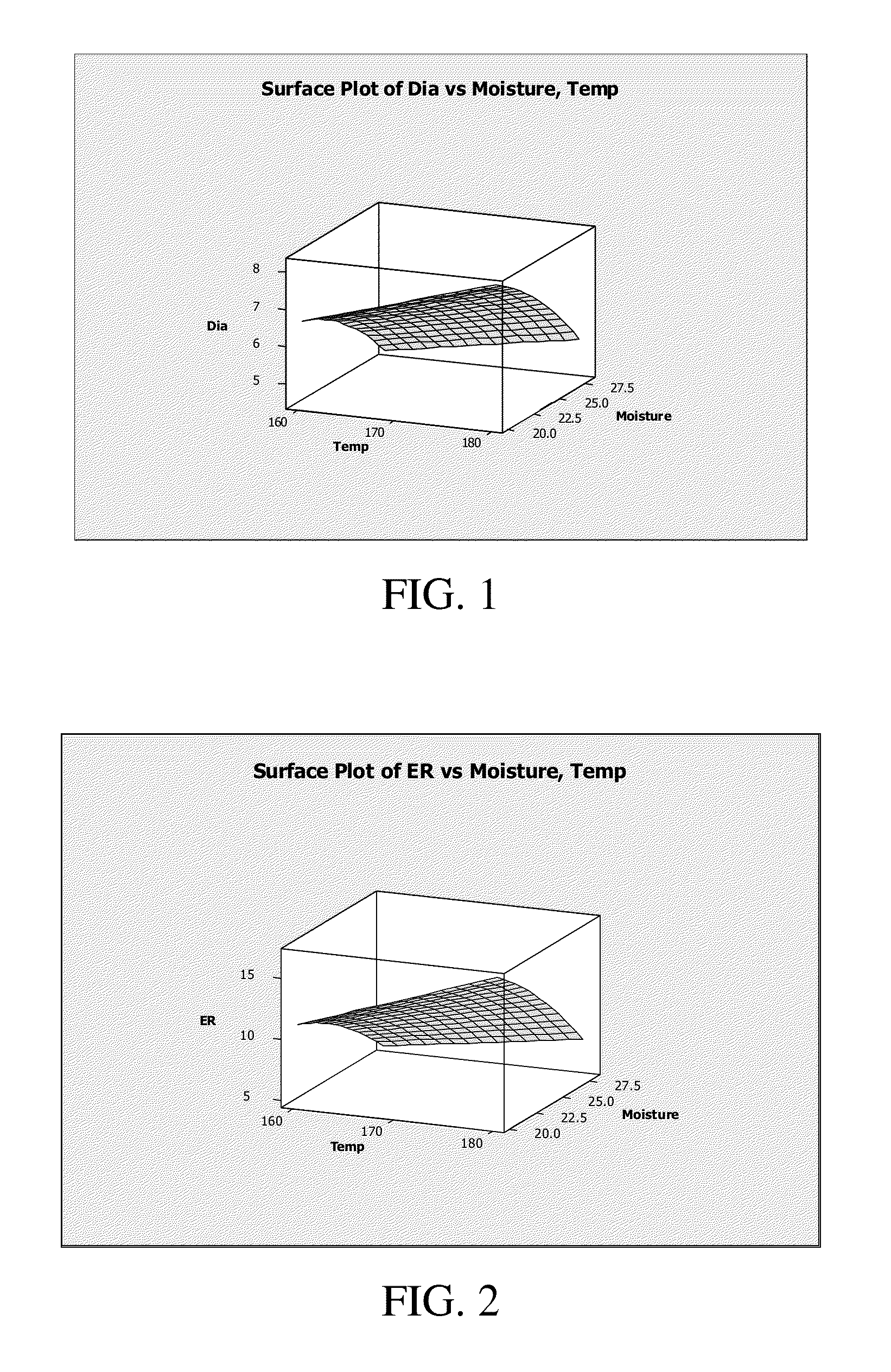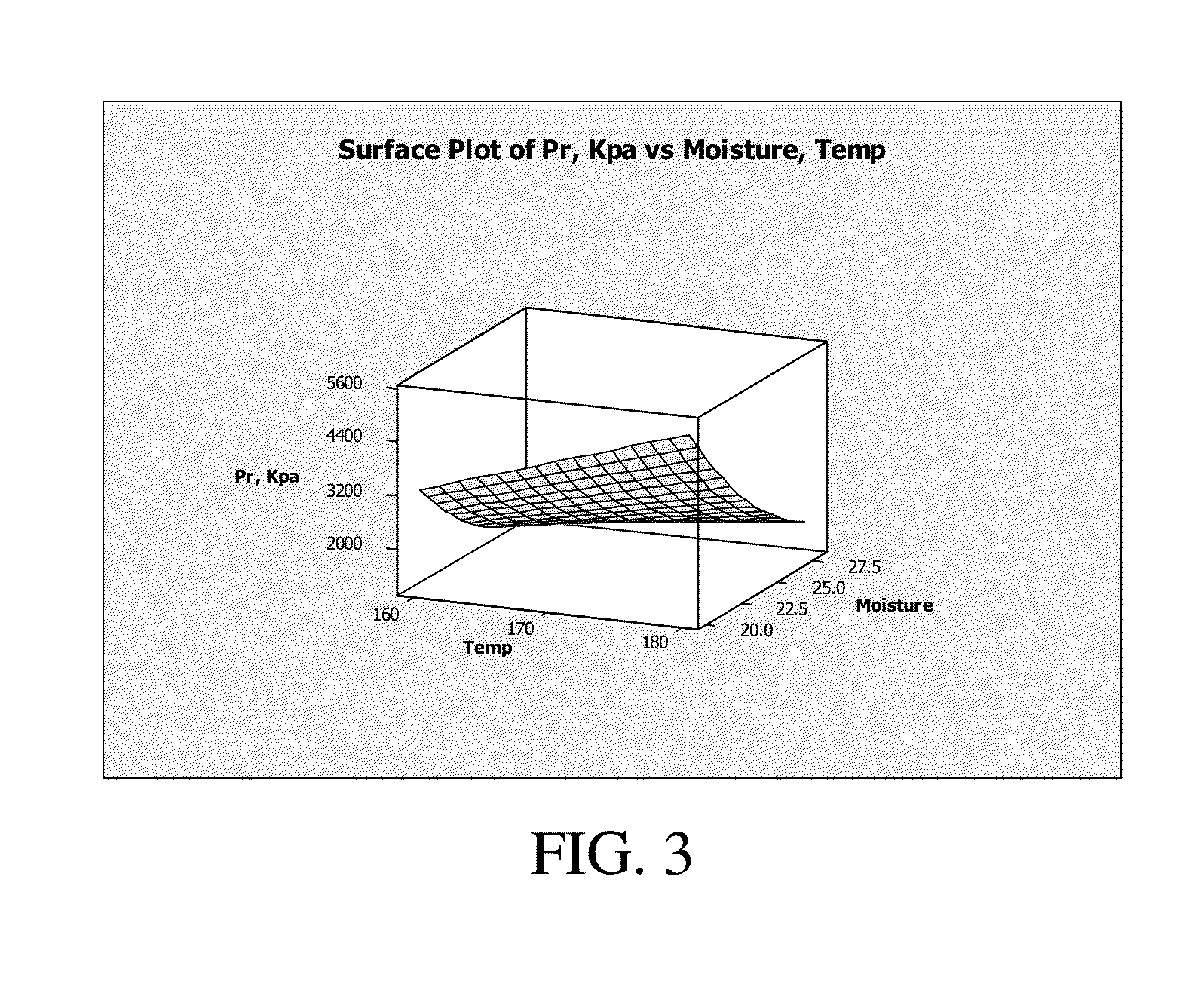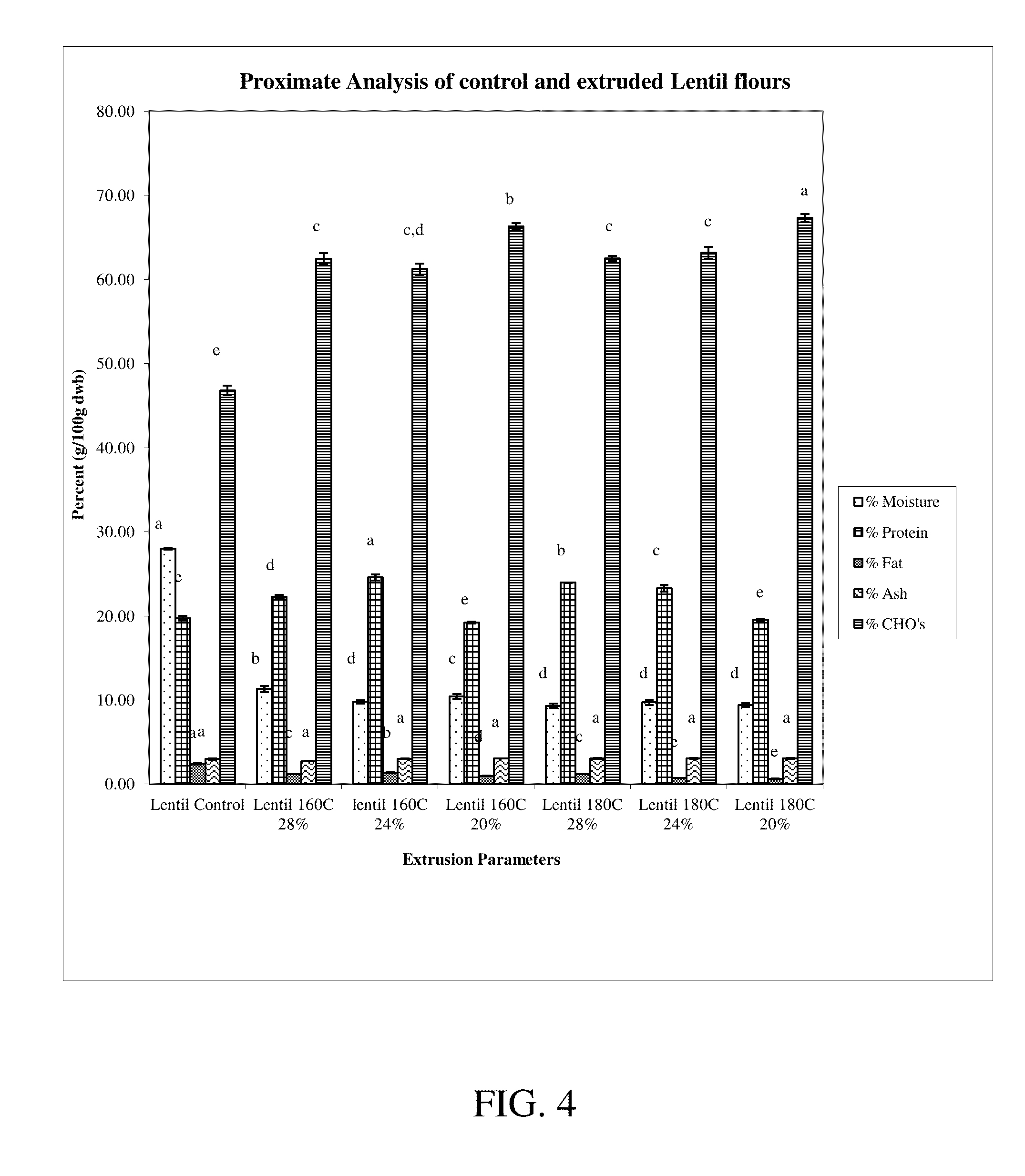Extruded Legume Food Products Containing Yeast Autolysate
a technology of autolysate and legumes, which is applied in the field of extruded legume food products containing autolysate, can solve the problems of long cooking time needed to soften beans, poor nutritional quality, and increased energy utilization
- Summary
- Abstract
- Description
- Claims
- Application Information
AI Technical Summary
Benefits of technology
Problems solved by technology
Method used
Image
Examples
example 1
Effect of Screw Speed and Starch Sources
[0091]Decorticated Red Chief lentils (Lens culinaris L.) were obtained from Moscow Idaho Seed Co., Moscow, Id. Prior to milling, each lot of seeds was mixed to a uniform lot. For the production of flours, the homogenized lentils were ground in a hammer mill using a 1 mm screen. The lentil flower was mixed with apple fiber, high amylose corn starch and flavoring ingredients (Table 4).
[0092]A Clextral Evolum HT 32H twin-screw extrusion system (Clextral-Bivis, Firminy Cedex, France) was used in this study. The heating profiles for the six barrel sections of the extruder were 15, 80, 100, 120, 140, and 160° C., respectively. Flours were fed into the extruder feed port by a twin-screw, lost-in-weight gravimetric feeder (Model LWFDS-20, K-Tron Corporation, Pitman, N.J.) at a rate of 25 kg / h and the extruder was run at three screw speeds of 500, 600 and 700 rpm. Water was added into the extruder through a variable piston pump (Model P5-120, Bran and ...
example 2
Leavening Agent and High Amylose Corn Starch Effect
[0117]Lentil beans (Lens esculenta), garbanzo beans (Cicer arientinum L.), whole yellow dry peas, and split-decorticated yellow dry peas (Pisum sativum) with moisture content of 9.2, 8.6, 9.6, and 10.1% (wb), respectively, were individually mixed to uniform lots and ground to flour using a Pin Mill model 160Z (Alpine, Co. Augsburg, Germany). Sodium bicarbonate (Sigma Chemical Co. St. Louis, Mo.) and starch Hylon V (National Starch & Chemical, Bridgewater, N.J.) were added to flours at 0.4% and 20% (w / w), respectively (Table 7). The flours with added ingredients were mixed for 10 min using a large Hobart mixer Model V-1401 (The Hobart Mfg. Co., Troy, Ohio) before extrusion processing. Totally 2,000 lbs of legume seeds and 350 lbs of starch were used in this comprehensive extrusion experiment.
TABLE 17Legume flours formulated with leavening agent and high amylase corn starchLegume andLegumeNaHCO3 Hyloningredients(%)(%)V (%)Lentil10000L...
example 3
Acceptability of Extrudates
[0123]Decorticated Red Chief lentils (Lens culinaris L.) were obtained from Moscow Idaho Seed Co., Moscow, Id., were homogenized and ground to a fine flour in a Pin Mill. The lentil flour was then formulated according to Table 10.
TABLE 20Lentil based formulations containing different texture modifiers# ofTotal lbs / batchRunsLentils1A.P.2W.B.3PB8004AP40SaltSugar5Thermolec6Yelkin7Dimo8Pano(“as is”)11000000000000100266.7550200350.25000100366.550200350.5000100466.2550200350.7500010056650200351000100666.75502003500.2500100766.5502003500.500100866.25502003500.7500100966502003501001001066.755020035000.2501001166.55020035000.501001266.255020035000.7501001366502003500101001466.7550200350000.251001566.550200350000.51001666.2550200350000.751001766502003500011001A.P.: Apple fiber.2W.B.: Wheat bran.3PB800: PenBind 800 modified potato starch4AP40: PenPlus 40 pregelatinized potato starch5Thermolec: Thermolec lecithin.6Yelkin: Yelkin TS lecithin.7Dimo: Dimodan PH 100 K-A8P...
PUM
 Login to View More
Login to View More Abstract
Description
Claims
Application Information
 Login to View More
Login to View More - R&D
- Intellectual Property
- Life Sciences
- Materials
- Tech Scout
- Unparalleled Data Quality
- Higher Quality Content
- 60% Fewer Hallucinations
Browse by: Latest US Patents, China's latest patents, Technical Efficacy Thesaurus, Application Domain, Technology Topic, Popular Technical Reports.
© 2025 PatSnap. All rights reserved.Legal|Privacy policy|Modern Slavery Act Transparency Statement|Sitemap|About US| Contact US: help@patsnap.com



